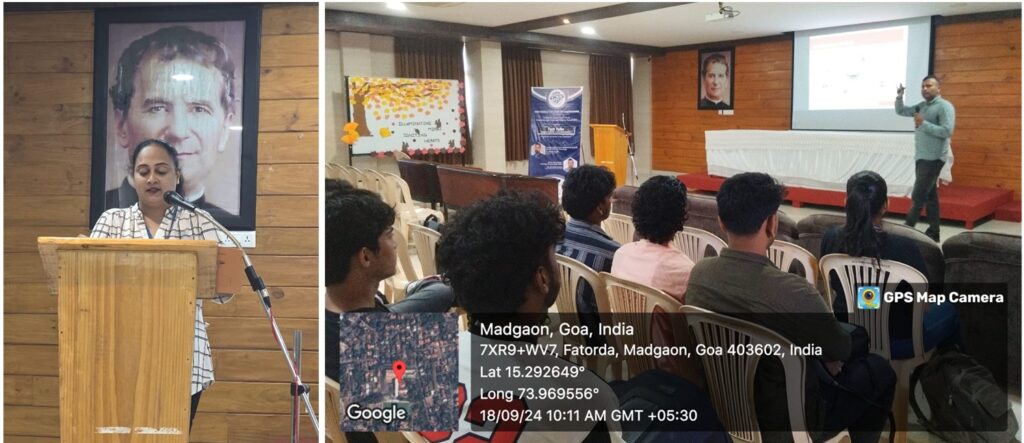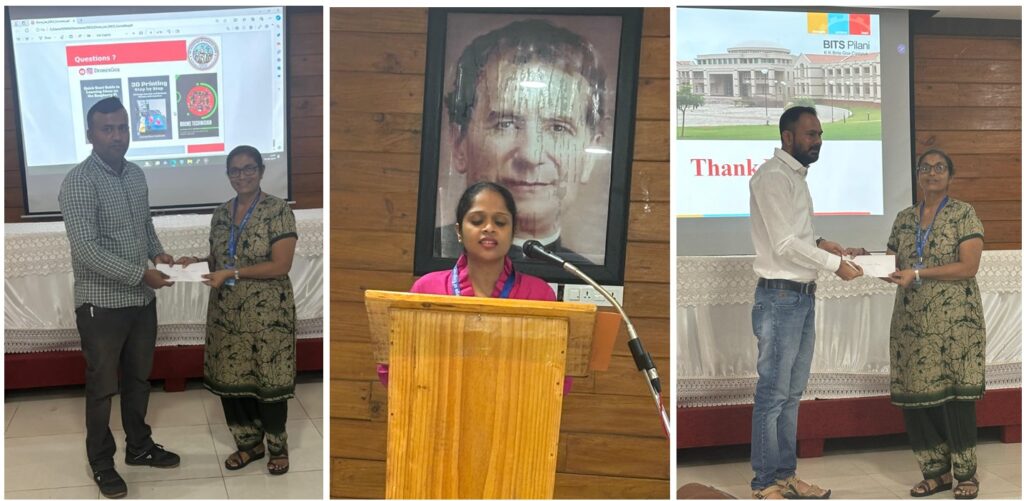Tech Talks 2024 – Edging Towards a Connected Future

The Institute Industry Cell (IIC) of Don Bosco College of Engineering, Fatorda, organized Tech Talks 2024 – Edging Towards a Connected Future, for the Electronics and Computer Science Department on 18th September 2024, as a part of Engineer’s Day Celebrations.
The Institute Industry Cell in 2017 was a pivotal decision aimed at nurturing a mutually beneficial relationship between academia and industry. The key objectives of this initiative included fostering continuous collaboration, narrowing the gap between theoretical learning and practical implementation, thus ensuring that educational programs align with evolving industry needs. Tech talks – Edging Towards a Connected Future, was an initiative started by Don Bosco College of engineering in the year 2022, so that students are abreast with cutting edge technology thereby
Our first speaker Mr. Carmelito Jose Andrade, DGCA Certified Drone Pilot and Trainer, gave a talk on, “Drone Technology – the past, present and future. Mr.Andrade began by explaining the growing use of Drone technology in modern ceremonies, highlighting its versatility and visual appeal. Recently, this technology was showcased at the opening ceremony of the internal games, at Fatorda Stadium, where swarm technology was employed. He discussed the use of LiDAR technology and interior mapping in drones for rescue operations, particularly for trapped miners. He also highlighted how drones are transforming filmmaking by capturing stunning aerial shots. Additionally, he explained drone anatomy, covering components like propellers, flight controllers, and batteries. He addressed DGCA licensing rules, emphasizing regulatory frameworks for drone use, and concluded with research project ideas, including Edge AI, UAV swarms, underwater ROVs, and advancements in battery technology.

Our second speaker Dr. Sudeep Baudha, Assistant Professor- E&EE, BITS Pilani, gave a talk on, “Unlocking the Future: Advancements in 5G and 6G Antenna Technology”. Mr. Baudha began by discussing the various applications of wireless technology, including movable devices like smartphones and tablets, medical treatment through remote monitoring and telemedicine, transportation systems as well as WiFi and GPS for location tracking and navigation. He emphasized the significance of antennas for receiving and transmitting electromagnetic signals. Mr. Baudha mentioned the world’s largest antenna in China, completed in 2016, which has a 500-meter range and a massive diameter, making it costly and potentially capable of disrupting satellite systems of neighboring countries. He concluded by discussing the health effects of radiation, which can cause serious issues like cardiovascular problems and cancers. To mitigate these risks, he recommended reducing exposure to 10 mV per square meter and advised cellular operators to lower power density to 0.5 W per carrier, noting the drawbacks of this approach, such as reduced range and increased costs due to the need for more transmitters.
Both the sessions proved highly informative, with students gaining a wealth of knowledge on the subject matter. The Event coordinators were Prof. Flavia Leitao and Prof. Samantha Cardoso.















 Visit Today : 1220
Visit Today : 1220